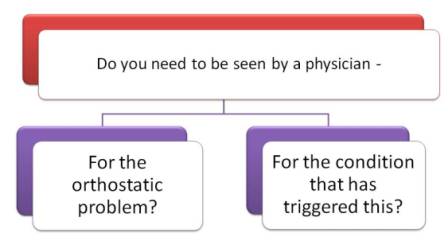Does the trigger need to be evaluated and/or treated now?

Does the trigger event need to be evaluated?
These questions help if you have an acute condition - new condition like a cold or the GI flu or the trigger is something that you already know about.
There are 3 main questions:
- Does the condition need evaluation or testing?
- If you think you have an infection that might be pneumonia or strep throat, it needs to be evaluated.
- If you have a high fever or you are coughing up stuff that is yellow or green, you might been an evaluation.
- Other evaluations or test needed could be an exam to listen to lungs, an x-ray, blood test, or culture.
- Could it be a condition that might need medication?
- Examples that might need antibiotics would be bacterial infections like pneumonia, strep throat, urine infection.
- If it is influenza, there are anti-viral drugs that should be started as soon as possible.
- Other conditions that need evaluation and treatment - like asthma.
- If this is a condition you have that is out of control and triggering this change in your orthostatic condition, does it need evaluation? Do you have the medications you need to take care of it at home?
- Can you manage the symptoms at home?
- If you have a GI condition with vomiting/diarrhea, can you get in enough fluids to keep up with what is coming out? Do you need some medication for nausea?
- Can you get enough fluids in?
- Do you have cough syrup to manage the coughing so you can rest?
— If you answered "yes" to the first 2 questions - you need evaluation, tests or medication
— If you aren't sure you can manage symptoms at home, you need to be evaluated.
Managing the Flare-Up at Home
If you don't think you need to be seen to address your orthostatic problem and you don't think the trigger event needd evaluation or new medication, then you can focus on managing your orthostatic symptoms and dealing with the trigger event.
Managing the Basics at Home
References
- Figueroa JJ, Basford JR, Low PA. Preventing and treating orthostatic hypotension: As easy as A, B, C. Cleve Clin J Med. 2010 May;77(5):298-306. Abstract --- Article PDF
- Rowe, Peter. General Information Brochure on Orthostatic Intolerance and Its Treatment. June 2010. Accessed from http://www.cfids.org/webinar/cfsinfo2010.pdf. Accessed May 28.2012.
- Johnson JN, Mack KJ, Kuntz NL, Brands CK, Porter CJ and Fischer PR. Postural Orthostatic Tachycardia Syndrome: A Clinical Review. Pediatr Neuro 2010; 42:77-85. Abstract.
Author: Kay E. Jewell, MD
Page Last Updated: August 6, 2012
